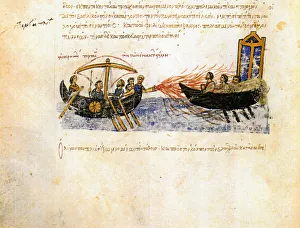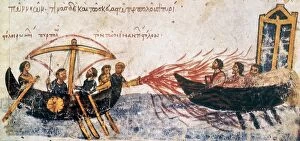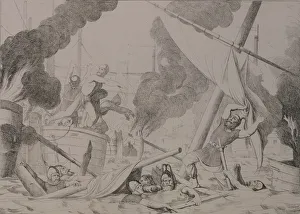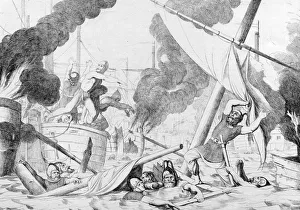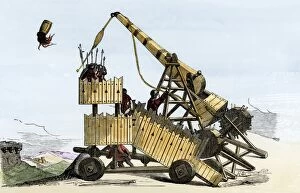Greek Fire Collection
"Unleashing the Flames of Destruction: The Power and Legacy of Greek Fire" Greek fire, a fearsome weapon that ignited terror on the battlefields
All Professionally Made to Order for Quick Shipping
"Unleashing the Flames of Destruction: The Power and Legacy of Greek Fire" Greek fire, a fearsome weapon that ignited terror on the battlefields, has left an indelible mark in history. Depicted in ancient manuscripts like the Madrid Skylitzes, this incendiary substance was a game-changer in warfare. Its usage by Byzantine forces against Arab fleets showcased its devastating capabilities. Engravings capturing the destruction caused by Greek fire further emphasize its potency. Ships engulfed in flames stand as testament to its ability to turn naval battles into infernos. Even beyond Byzantium's borders, this lethal innovation found new life when adopted successfully by Allied forces during World War I. The Siege of Constantinople serves as a vivid backdrop for Greek fire's prominence. As depicted before 1839 and again in 1832, it became a pivotal tool for defenders fending off relentless attacks. Artists like Friedrich Martin von Reibisch and Bruni immortalized these fiery encounters through their detailed illustrations. Siege catapults also played a role in delivering Greek fire onto enemy lines, as seen in Henry Shaw's artwork from 1843. These mechanical marvels launched projectiles filled with liquid fire towards adversaries with deadly precision. Interestingly, Greek fire even transcended time periods and cultures; Roman soldiers were shown employing it centuries earlier using arrows and slingshots according to depictions from 1605. This fusion of ancient techniques with modern firepower is captured poignantly by John Tenniel's "Extremes Meet" engraving from 1863. From antiquity to more recent conflicts, the legacy endures—a testament to human ingenuity amidst warfare's darkest moments. Its impact on military strategy remains unparalleled even today—an everlasting reminder of mankind’s ability to harness destructive power for both defense and offense alike.

